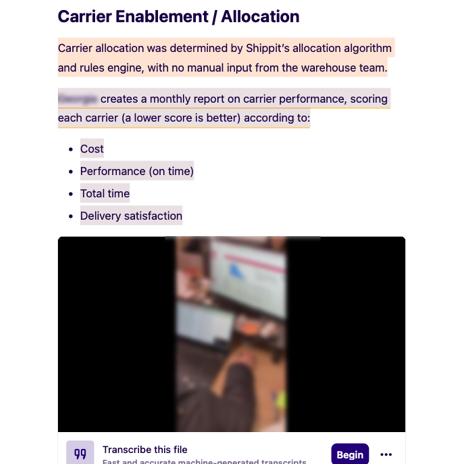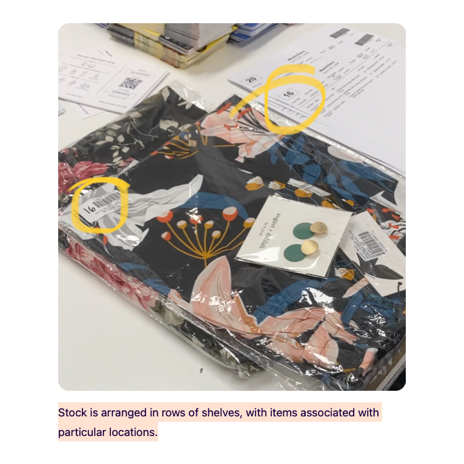Multi-partner shipping solutions bring benefits to businesses and customers by expanding coverage, providing flexibility, improving efficiency, ensuring reliability, and optimising costs. They also contribute to a greener environment by reducing carbon emissions through resource efficiency and minimising road congestion.
As a Senior User Experience Researcher, I played a critical role in shaping Shippit’s Smart Routing feature, the first multi-partner shipping solution on the Shippit platform. This case study highlights my research efforts and the impact they had on the positioning and design of the multi-partner shipping solution.
The hidden complexity of multi-partner shipping
- Smart Routing
- UX Strategy, User Interviews, Contextual Inquiry
Shippit is an all-in-one shipping platform that simplifies and streamlines logistics operations by enabling easy comparison of carrier rates, automated order fulfilment, real-time package tracking, and optimising shipping routes for reliability and cost savings.
One of the benefits of a shipping platform like Shippit is easy access to a range of shipping solutions. While Shippit’s platform was designed with single-carrier shipping solutions in mind, there was an opportunity to expand this range by introducing support for multi-partner shipping solutions, specifically Smart Routing.

Photo by Claudio Schwarz on Unsplash
Our objective
Shippit faced pivotal decisions when introducing the multi-partner shipping solution. We needed to position it effectively against single-carrier solutions and seamlessly integrate it into a merchant's operations. These decisions would have significant impact on the development of Shippit’s multi-partner capabilities, the success of the Smart Routing feature, and provide the basis for other multi-partner capabilities in the future.
My role
To understand how merchants make decisions regarding carrier allocation and measure performance, I initiated a research study. My role included identifying a research opportunity, planning and conducting the study, communication of research findings and incorporation of these insights into the team’s solutions.
Approach
I began by conducting in-depth interviews with merchants to explore their evaluation criteria for carriers. Key insights emerged from these interviews, revealing that despite actual performance indicating otherwise, merchants perceived higher risks in multi-partner deliveries. Additionally, merchants expressed a preference for a single point of ownership and responsibility.
Immersive case studies of individual merchant carrier evaluation techniques contributed to a comprehensive understanding of carrier evaluation factors.

To delve deeper into carrier requirements throughout the fulfilment process, I conducted contextual inquiries. These observations provided invaluable insights into essential moments in the fulfilment workflow such as carrier allocation, labelling, sortation, delivery tracking, and customer support. By mapping the user journey and creating a storyboard of key moments, I was able to communicate the implications for a multi-carrier offering and drive decision making in the team.
Contextual inquiriy provided invaluable insights into essential moments in the fulfilment workflow such as carrier allocation, labelling, sortation, delivery tracking, and customer support.

Results
Armed with these research insights, I played a pivotal role in impacting key decisions around the offering's positioning and presentation. We decided to position the multi-partner shipping option under a single branded carrier to address merchant concerns about ownership and risk perception. This positioning strategy enhanced merchant confidence and increased adoption of the Smart Routing feature.
Moreover, the research findings influenced design decisions related to labelling, tracking, and other core functionality. By understanding the merchant workflow and their preferences, we were able to improve the integration of the multi-partner offering into their operations, making it seamless and efficient.
Beyond the immediate impact on the multi-partner shipping solution, the research insights informed other important initiatives within Shippit. They contributed to the development of the Shipping Optimizer, enabling improved carrier mix recommendations that better reflected merchant preferences. Additionally, the insights influenced key initiatives such as Shipping Optimiser and core functionality such as carrier allocation, fulfilment, and delivery tracking, ensuring they aligned with merchant expectations and requirements.
Through my research study, I played a crucial role in enhancing Shippit's multi-partner shipping solution, Smart Routing. By uncovering merchant perceptions, preferences, and critical moments in their workflows, I influenced key decisions around positioning and design. The impact of my research extended beyond the immediate scope, contributing to other initiatives and core functionality within Shippit. With user-centric insights driving the development process, Shippit successfully delivered a seamless, efficient, and highly adopted multi-partner shipping solution.
By mapping the user journey and creating a storyboard of key moments, I was able to communicate the implications for a multi-carrier offering and drive decision making in the team.


